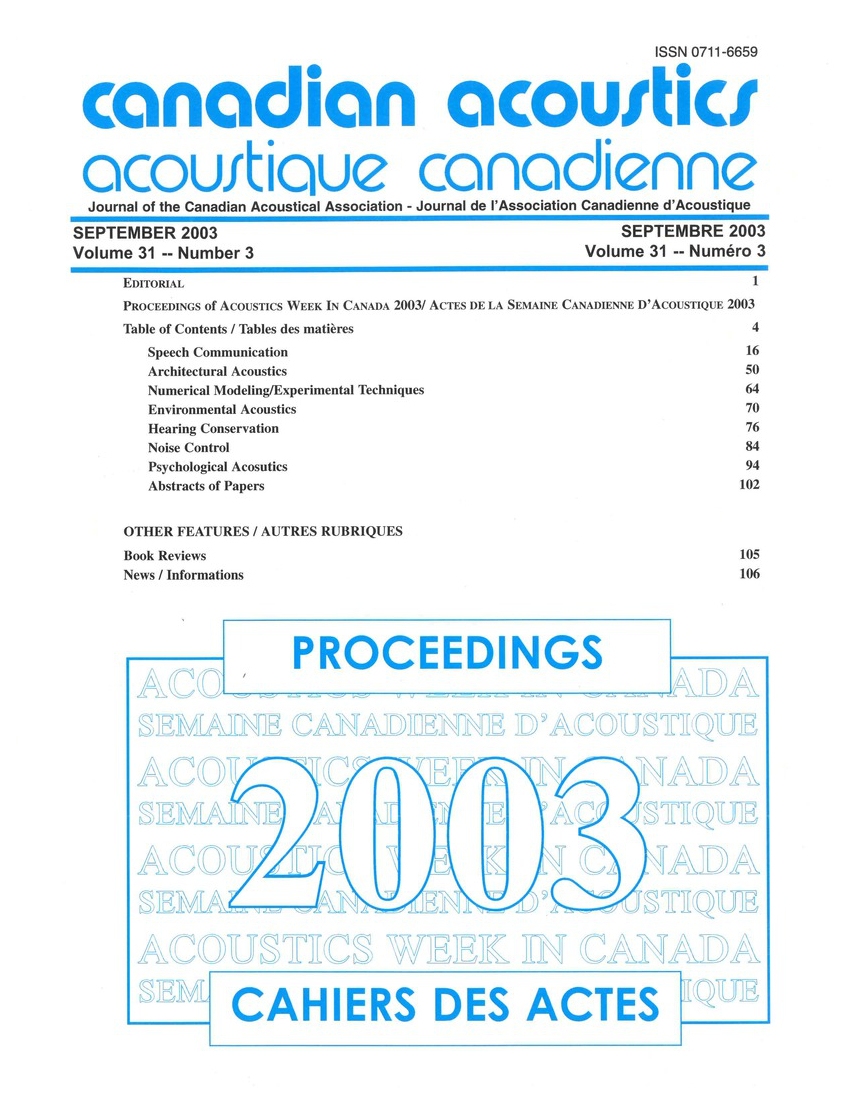Effect of phonetic context on women's vowel area
Keywords:
Bandwidth, Calculations, Electric frequency measurement, Mathematical models, Natural frequencies, Pathology, Speech analysis, Speech intelligibility, Statistical tests, Stereophonic recordings, Analysis of variance, Formant frequencies, Phonetic context, Vowel quadrilateral areaAbstract
A basic methodological isue for a variable that was identified as one important acoustic correlate of speech intelligibility was addressed. This variable was vowel quadrilateral area (VQA). VQA refers to the area enclosed in the quadrilateral formed by a plot of the coordiantes for the first and second major vocal tract resonances of the corner vowels. Visual inspection of the VQA plots revealed that increases in F2 frequency values for /u/ contributed most to reduced VQA in non-neutral phonetic context conditions.Additional Files
Published
How to Cite
Issue
Section
License
Author Licensing Addendum
This Licensing Addendum ("Addendum") is entered into between the undersigned Author(s) and Canadian Acoustics journal published by the Canadian Acoustical Association (hereinafter referred to as the "Publisher"). The Author(s) and the Publisher agree as follows:
-
Retained Rights: The Author(s) retain(s) the following rights:
- The right to reproduce, distribute, and publicly display the Work on the Author's personal website or the website of the Author's institution.
- The right to use the Work in the Author's teaching activities and presentations.
- The right to include the Work in a compilation for the Author's personal use, not for sale.
-
Grant of License: The Author(s) grant(s) to the Publisher a worldwide exclusive license to publish, reproduce, distribute, and display the Work in Canadian Acoustics and any other formats and media deemed appropriate by the Publisher.
-
Attribution: The Publisher agrees to include proper attribution to the Author(s) in all publications and reproductions of the Work.
-
No Conflict: This Addendum is intended to be in harmony with, and not in conflict with, the terms and conditions of the original agreement entered into between the Author(s) and the Publisher.
-
Copyright Clause: Copyright on articles is held by the Author(s). The corresponding Author has the right to grant on behalf of all Authors and does grant on behalf of all Authors, a worldwide exclusive license to the Publisher and its licensees in perpetuity, in all forms, formats, and media (whether known now or created in the future), including but not limited to the rights to publish, reproduce, distribute, display, store, translate, create adaptations, reprints, include within collections, and create summaries, extracts, and/or abstracts of the Contribution.


